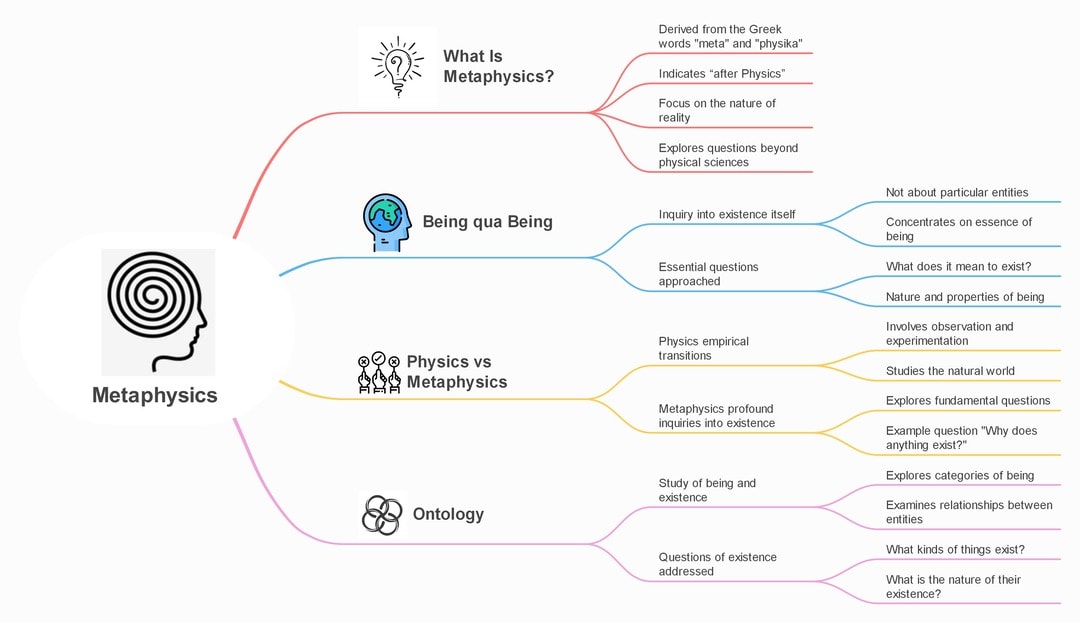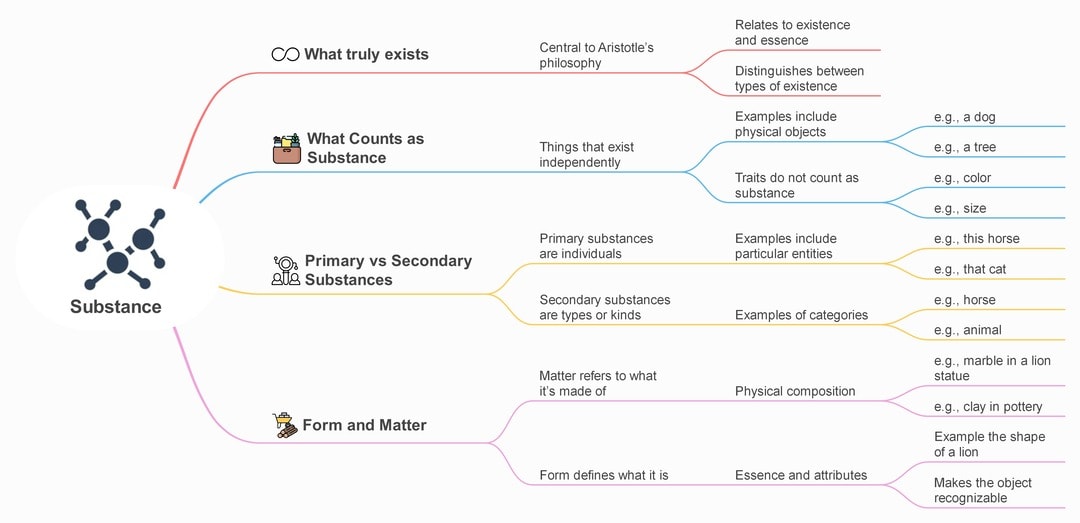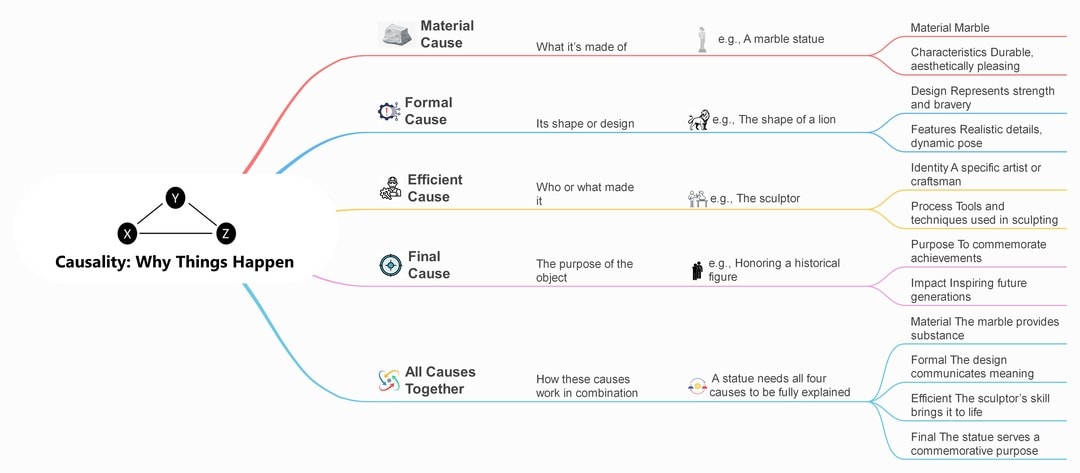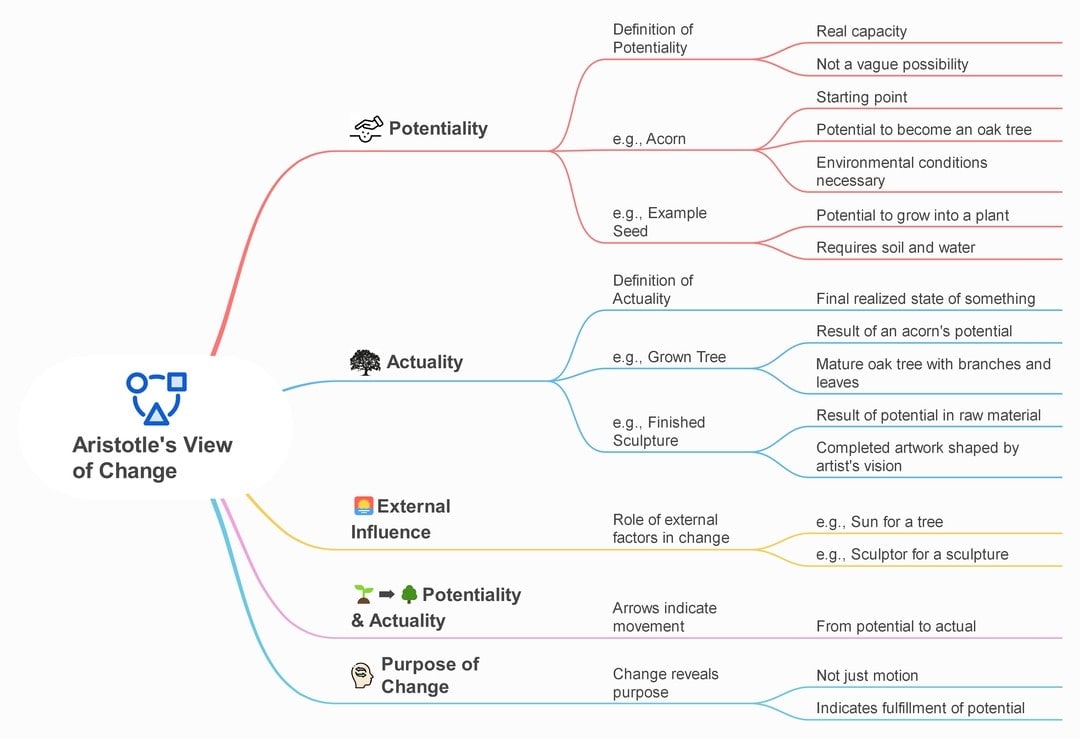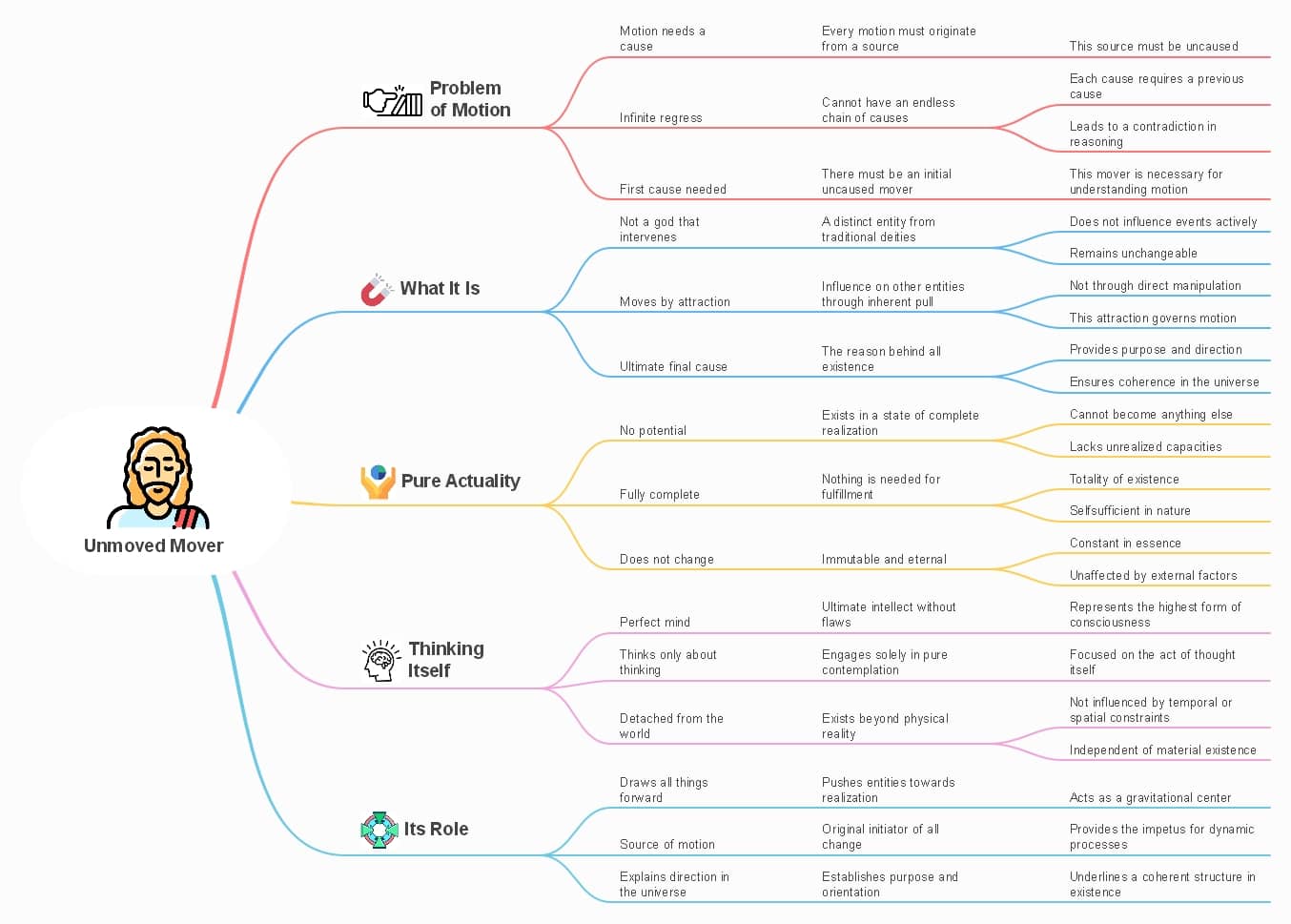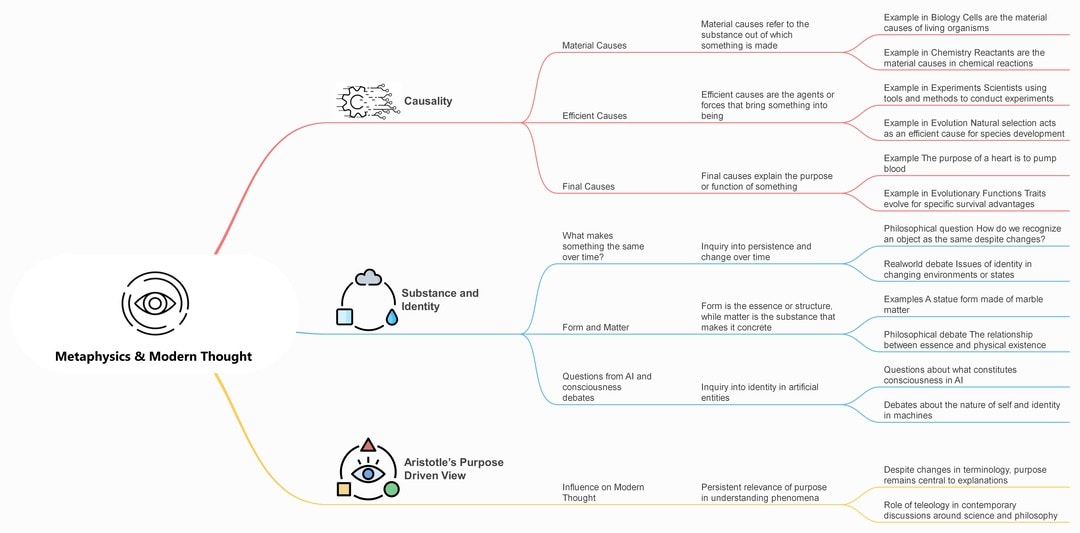No one greets the day thinking of being qua being. But when you ask what is real or why anything is here, metaphysics is at work. It gets a bad rap for being obscure and removed from reality. That view sells it short.
Aristotle's Metaphysics is more than an ancient text. It shapes how we explore change, identity, cause, and purpose. And it still underlies science today.
In this summary of Metaphysics, I won’t use a scholarly text. It’s for anyone who wants to see why things exist, how they evolve, and what it means when we say something simply is.
Aristotle nailed those questions. His insights remain essential. Let's get in.
In this article
The Basics of Metaphysics
What Is Metaphysics
The word "metaphysics" means "after physics." It's Greek. But Aristotle didn't pick that name. Some editors gave it that title because they put this book after his Physics. It ended up being a pretty accurate name.
Physics studies change and the natural world. Metaphysics asks the deeper question: why is there anything at all?
Being qua Being
Aristotle defined metaphysics as the study of being itself, not any specific being, but being as such.
The key question isn't what something is made of. It's what it means to exist in the first place.
How Metaphysics Differs from Physics
Physics is about the physical world. It looks at how things change and move. Metaphysics goes further. It asks why there's anything at all.
This kind of thinking may seem removed from daily life. But every science assumes certain things are real. Metaphysics is the study that questions those assumptions.
Ontology: Studying What It Means to Be
One branch of metaphysics is called ontology. That's the study of what exists, and how we sort the world into kinds of things.
Aristotle's starting point was this: What does it mean to be? His answer was simple, being means being a substance.
Everything real is a substance. Dogs, people, stones, all exist in themselves. Each has its own form and stands apart.
This makes them different from traits like "tall" or "warm." A trait can't exist without something else. A substance can.
For him, this concept is the base of everything. It shapes how he thinks about change, purpose, and the divine. Without it, the rest of his thinking falls apart.
That's why he begins here. Before any science, before theology, he starts with the one question we can't skip: What does it mean to be?
Substance: The Heart of Reality
What Aristotle Means by Substance
For Aristotle, the most real thing in the world is not tiny particles or energy fields. It's what he calls substance, something that exists on its own. It's not just a trait or a part of something else. It exists in the full sense.
A rock is a substance, and so is a dog or a person. However, things like color, height, or location are not. Those are features, not the thing itself.
If you think of a person, their feelings or height can change. But the person stays the same. That lasting core, that's what Aristotle means by substance.
Two Types: Primary and Secondary
He divides substances into two levels.
- Primary substances are individual things, such as this specific person or that dog.
- Secondary substances are the kinds or types, like "human" or "dog."
The primary comes first. You can meet a person, but not the concept of "human" in real life. That second layer is more for organizing thought than for pointing to real things.
Form and Matter
Aristotle adds another point: every substance is composed of form and matter.
- Matter is what the thing is made from.
- Form is the pattern or design that gives it shape and identity.
A wooden table consists of wood (matter) and a table shape (form). Break it up, and you still have wood, but no table.
Or think of a marble statue. The stone is the matter. The lion shape is the form. Without that form, it's just a rock, not a statue.
This way of thinking, form and matter together, helps explain how things exist and why they are what they are.
Causality: Why Things Happen
We often think of a cause as the thing that makes something happen. Aristotle agreed, but he took it much further.
Everything happens for a reason, he said. To explain that reason, he offered a simple but powerful method: ask four questions. These lead to the Four Causes.
1. Material Cause: What Is It Made From
Everything has a physical base. That's the material cause.
Example: A statue made of marble. Marble is the material cause.
This explains the raw material, but not much more.
2. Formal Cause: What Shape or Form Does It Take
This is the structure or design that defines the thing.
Example: A lion carved into the marble. That shape is the formal cause.
Without this, the marble wouldn't mean anything. With it, it becomes something specific.
3. Efficient Cause: Who or What Made It
This is the cause that makes the thing happen.
Example: The sculptor, doing the carving. That's the efficient cause.
It's action-based. But it's not the full story.
4. Final Cause: What's the Purpose
This is the reason behind it all, the goal.
Example: A statue made to honor someone. The purpose of honoring is the ultimate cause.
For Aristotle, this was the key cause. Without purpose, everything loses its direction.
He believed all four causes are needed. Leave one out, and you miss the bigger picture.
The Nature of Change: Potentiality and Actuality
Aristotle viewed change differently than those who came before him. Instead of just naming elements or opposites, he asked how something becomes what it is.
His answer was simple yet profound: change means moving from potentiality to actuality.
What's Potentiality
It's the real ability of a thing to be something else. Not a guess. Not a hope.
An acorn doesn't contain a tiny, useless seed; it holds the power to become a tree. That's potentiality.
What's Actuality
Then, there's the end of the journey. Actuality is when the thing is what it could be.
A tall oak tree is the acorn's potential, fully realized and actual.
However, here's the key: not everything with potential will become actual. Still, everything that's actual at a time began as potential.
The Role of External Influence
Nothing moves from potential to actual by itself. Change also needs force.
A spark, a guide, a condition, something from outside helps. That's what Aristotle calls the efficient cause.
So in his view, change reveals purpose. It shows what things are meant to be and how they get there.
The Unmoved Mover: Aristotle's Concept of God
The Problem of Infinite Motion
Aristotle noticed that motion never happens on its own. Something always sets it off. So, he started tracing those causes. This caused that, and that caused something else. But how far back can you go?
He argued that there must be a first cause, something that initiated everything but wasn't itself initiated by anything else. He called it the Unmoved Mover.
What Is the Unmoved Mover
This isn't a god that creates the world or answers prayers. It doesn't come into the world or take action. It explains motion not by force but by attraction. Everything moves toward it naturally.
It's like an ultimate cause, something that draws things toward it, not something that pushes.
Think of a chain reaction. If you keep asking what triggered the first movement, you eventually need something that didn't require a trigger.
That's the Unmoved Mover.
God as Pure Actuality
Most things are a mix of potential and actual. They might become something else, or they're still changing. But the Unmoved Mover is already complete. It has no potential left. It doesn't move, grow, or shift. It just exists in a fully finished state.
Thinking About Thinking
Aristotle saw the Unmoved Mover as a perfect mind. It thinks about thought. That's it. It doesn't focus on anything in the world. It doesn't care, choose, or decide.
It doesn't control anything, but it still matters. Everything in nature is drawn to its perfection. That's how Aristotle explained direction in the universe without needing gods who interfere.
Metaphysics and Modern Thought
Aristotle's Metaphysics wasn't just abstract theory. It established a foundation that still underpins our current thinking, encompassing science, ethics, and logic. The words may feel distant now, but the questions remain close to our lives.
He believed everything had a purpose. That idea, along with his view that reality has a structure, helped shape the development of Western thought.
Causality and Science
Science no longer follows Aristotle's physics, but his view of causality still plays a role.
- Material cause appears in chemistry and biology, referring to what something is made of.
- Efficient cause forms the core of experiments, what causes a change.
- The final cause is rarer in science, but it is evident in areas such as evolutionary biology. Asking what function something serves is a modern form of the concept of final cause.
Example: In medicine, we look at what an illness is made of (a virus), how it spreads (the cause), and sometimes, what purpose the body's response serves. All three causes still matter.
Substance and Identity
Aristotle also focused on substance, what makes a thing what it is. This question never really left philosophy.
From Descartes to Kant to modern thinkers, many have tried to answer: What stays the same when something changes?
His concept of form and matter remains a topic of significant debate, particularly in the fields of AI and consciousness.
Example: In AI, we're asking: What makes someone a person? Is it the way they function, or the fact that they're made of living matter?




